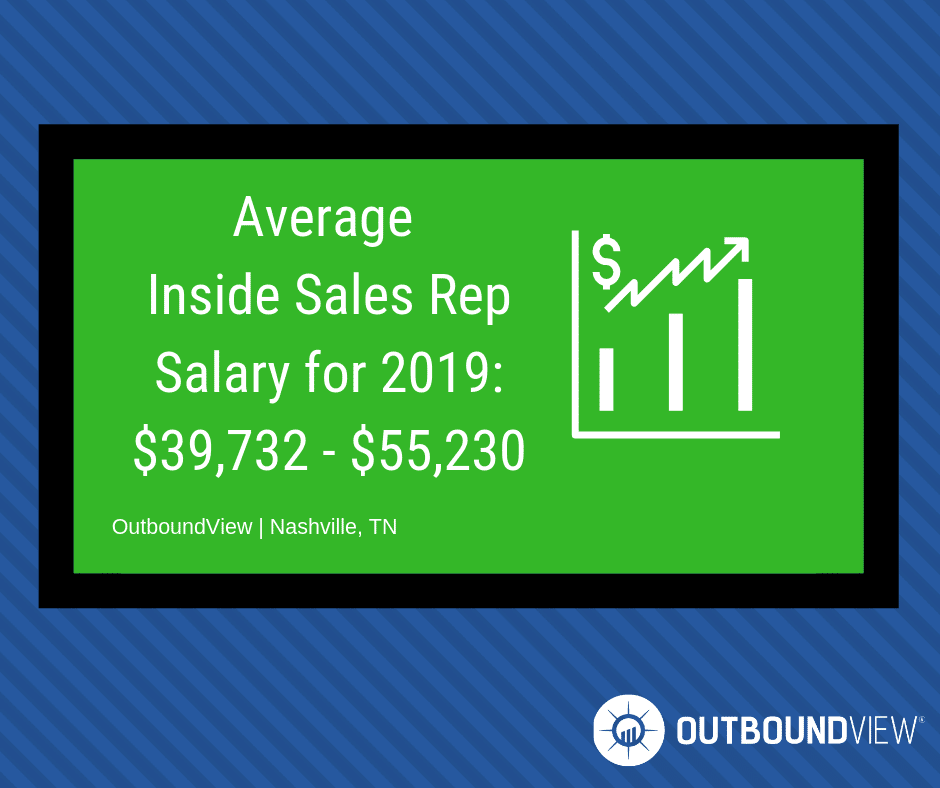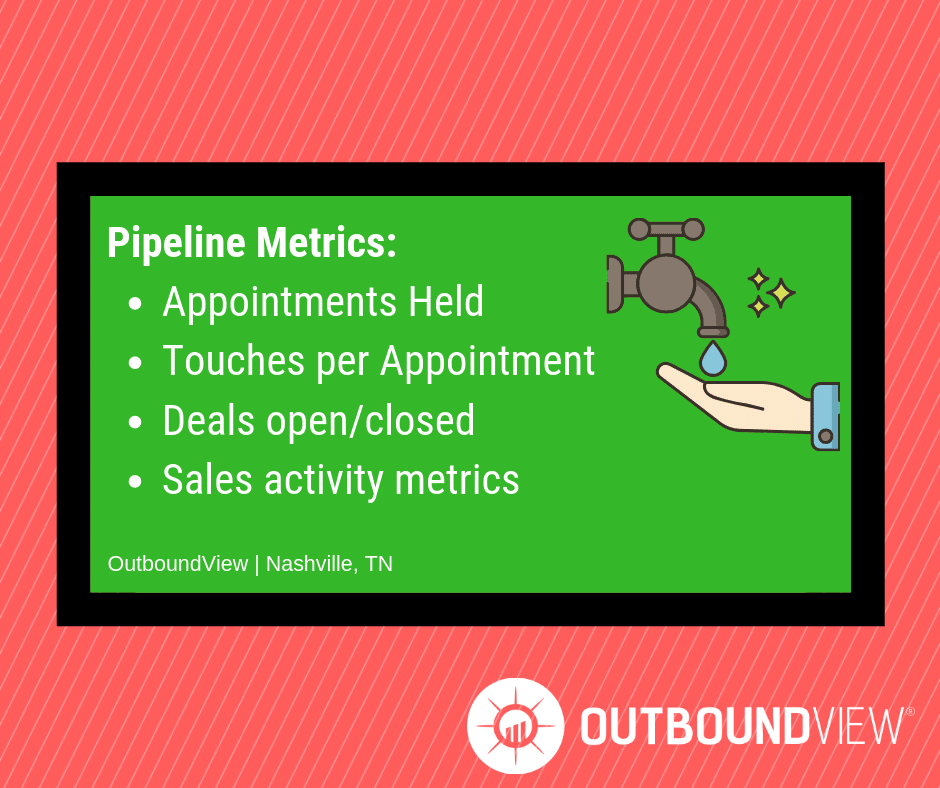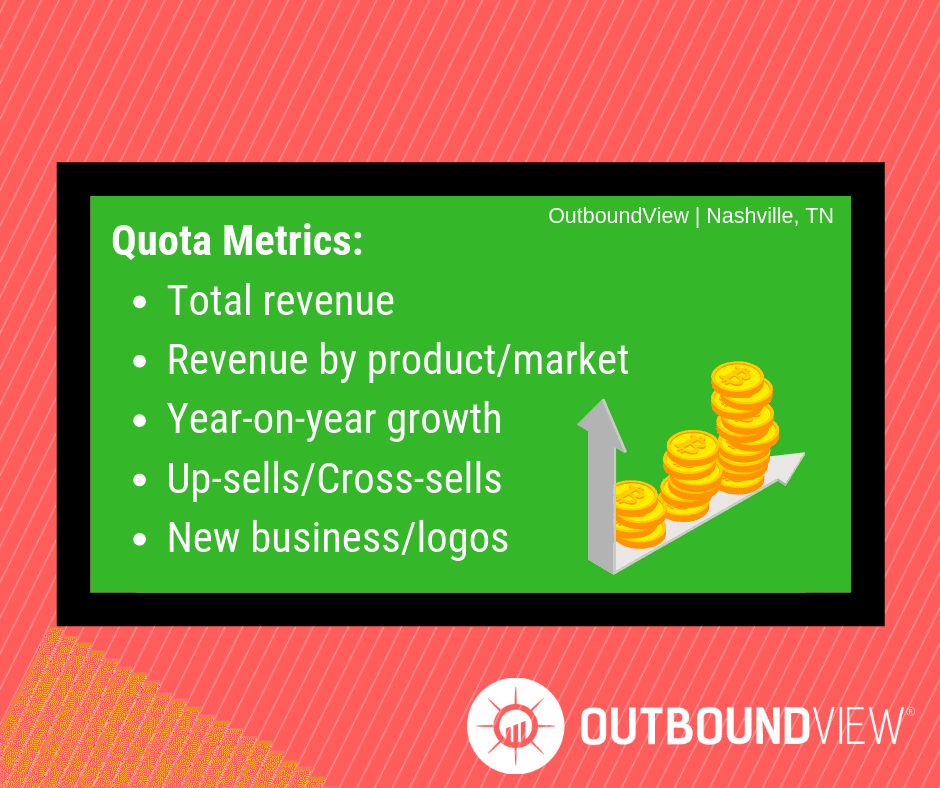Are you hiring inside sales representatives and wondering how much to pay them? Well, you’re not alone. Inside sales representative salary and structure can be very difficult to figure out. When it comes to compensation models, getting the base salary – bonus split right is the most tricky part. This is because sales reps will follow the money, and so it’s important to incentivize the right behaviors.
Average Inside Sales Rep Salary in 2020
Let’s start with the salary, then we will move into incentive compensation models. When it comes to compensation, location will always be the most important variable. A sales rep from San Francisco or New York will obviously have a salary higher than one from Nebraska. This allows employees to cover the costs of living and employers to be competitive.
 According to Salary.com, the average Inside Sales Representative salary in the United States was $46,710 as of May 31, 2019. There will, of course, be differences based on location and experience. The salary range for inside sales typically falls between $39,732 and $55,230.
According to Salary.com, the average Inside Sales Representative salary in the United States was $46,710 as of May 31, 2019. There will, of course, be differences based on location and experience. The salary range for inside sales typically falls between $39,732 and $55,230.
That said, each company will have its own compensation model. I’ve heard of inside salespeople working purely on commission with no base. There are also inside sales roles where the individual makes $200,000+ per year with all incentives.
Broadly speaking though, most companies will have a base salary and a bonus compensation. Below you have a common pay structure for inside sales representatives:
Inside Sales Salary in Large and/or High-Tech Cities
- Salary Range: $45-70K Base
- Incentive Range: $20-40K
- On Target Earnings: $65K-110K
In larger, high-tech cities like San Francisco or New York we will find higher base salary for inside sales reps compared to the bonus. In other cities like Seattle or Austin, the bonus might trump the base. There’s one simple reason, and that is competition between employers.
Particularly in the SaaS/B2B technology space, oftentimes we see more jobs than there are sales reps available. When more people are hiring, they have to compete for talent and pay larger base salaries and better incentives.
Inside Sales Salary in College Towns & Smaller Cities
- Salary Range: $35K-50K
- Incentive Range: $20-40K
- On Target Earnings: $55K-90K
In smaller towns, or college towns especially, you will find that base salaries will be lower than some of the larger cities. We find that college towns especially have lower base salaries for inside sales because there are so many candidates. When you have a large talent pool, it typically drives salaries down.
Now that we’ve covered salaries, let’s focus on types of incentive compensation for inside sales reps.
Types of Sales Metrics
Generally, there are two types of sales metrics or KPI’s (key performance indicators) that you can use to evaluate sales rep performance.
- Pipeline metrics: You can assess sales rep performance by using metrics related to how much they build pipeline. These are: the number of meetings, the number of appointments set, appointments held or sales activity. You can also count deals opened and closed in the same quarter, or forecast accuracy.
- Quota metrics: Revenue, closed deals, win ratio, deal size and sales cycle.
It’s very common for inside sales managers to look at pipeline metrics to evaluate the inside sales’s rep performance. This is because they are tied closely to their activity. Sometimes a mix of metrics might come into play.
 Pipeline Metrics
Pipeline Metrics
Sales managers looking at the bottom line will also look at the health of their sales pipeline holistically. It’s a good idea to take the time and understand what the inside sale’s teams objective is, and then incentivize the right behaviors. What should be their ultimate goal? To answer this, they must take the time to answer some questions:
- Did they set as many appointments as possible?
- What percentage of these are held?
- How many emails or calls did they make to get one appointment?
- How many deals were opened and closed in the same quarter?
- Did they accurately project how many solid opportunities were in the pipeline?
Bonuses for Sales Activity Metrics
Oftentimes, inside sales reps might get a list of leads from marketing and start working it. Then they get frustrated at how slow good opportunities reveal themselves. Data shows that it takes about 8 cold calls to actually reach a prospect, and less than 2% of cold calls actually lead to a meeting. Sales reps may get discouraged and say: “all marketing leads are bad.”
For these situations, you can incentivize sales reps for those activities that actually lead to getting meetings. Make sure they have a daily amount of calls to make, emails to send, voicemails to leave and so forth. If they don’t make these metrics, they should not get their bonus – and even be eligible for disciplinary action. This takes their mind off of distractions, and keeps them working towards their goal.
Meetings Set or Held Bonuses
One of the most common ways to incentivize inside sales reps is to offer bonuses for each meeting/appointment they set. This is because it’s a metric that inside sales reps can control the most.
Appointment setting or appointments held bonuses are all over the place. We regularly see a dollar amount per appointment set, or a bonus once you get to a certain number of meetings per week, month, or quarter. There are also kickers or additional incentives if you go above and beyond your normal quota.
Sometimes there may be bonuses for appointments held just to make sure that SDR’s are not working towards an empty number. This approach doesn’t take into consideration how solid the opportunity is. This is where it makes sense to have a clear definition as to what is a sales qualified lead and a healthy opportunity. These definitions are based on your business context, and this makes sure that inside sales reps don’t misclassify leads.
Once again, there are a lot of options, but the key is some type of goal and incentive to set a certain number of meetings.
 Quota Metrics: Chasing the Revenue
Quota Metrics: Chasing the Revenue
Some inside sales teams might also have a part of their variable compensation tied to quota metrics such as closed deals, or even revenue.
Closed Deals
We often find there is some type of kicker for the inside salesperson when a deal they find actually closes. This incentive aligns the inside salesperson with finding opportunities that actually close.
Remember that many times, inside sales people don’t have control over whether the deal closes or not. So, if you structure sales compensation on closed deals, you don’t want that to make up the bulk of the incentive compensation.
The bulk of the incentive compensation should be based on things the inside salesperson can control, like number of meetings set.
Bonuses for Sales Coaching and Training
Organizations often underestimate how important sales training is – and how much is lost in those first few weeks of training. To make sure inside sales always has their skills up to date, you can give bonuses for taking sales coaching and training courses.
And don’t just do it in the first four weeks of on boarding. Keep continually offering small bonuses to those sales reps which refresh their memory by re-taking the courses. Don’t forget the managers as well. Give props and recognize those sales managers who take time out of their busy day to allow shadowing and coach their team.
Conclusion
There are companies like salary.com or glassdoor.com that will give you a good idea of what the pay should be for your location. You can check out this article here to view the cost of living in major cities.
It’s a good idea to look locally and see what other similar companies in your city are paying. In our experience, it’s pretty easy to find the right base salary, getting the compensation correct on the incentive side is much more difficult.


